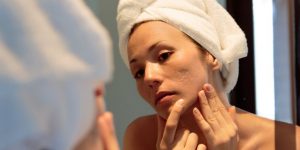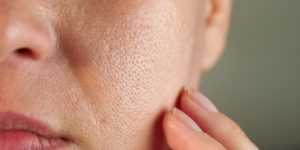Free Shipping Over $100
Free Samples With Every Purchase
Auto Replenishment Available
Authorized Reseller
Skincare Products – Dos & Don’ts

So, you’re ready to invest in some new skincare products, but you’re not sure how to use all of your new products together. In this blog, we’ll walk through some of the dos and don’ts to create your perfect skincare routine. If you ever have questions about what products you should be using, talk to your dermatologist. They can help you choose the right ingredients to create the best skincare routine.
Your Morning Skincare Routine
 Before we get started walking through all the dos and don’ts of your skincare routine, let’s take a few moments to discuss exactly what your morning and evening skincare routines should include (yes, they should be different).
Before we get started walking through all the dos and don’ts of your skincare routine, let’s take a few moments to discuss exactly what your morning and evening skincare routines should include (yes, they should be different).
In the morning, you want to protect your skin from all the stresses and irritants that the day throws your way. Therefore, your morning products should be hydrating and protecting the skin. Each person is different, so consult a dermatologist.
A good basic skincare routine should include:
- • Cleanse – Start with a clean slate each morning by gently washing away the oil and grime from the night before.
- • Treat – Apply your treatments and serums (we’ll talk about some of the specifics in the layering section below).
- • Moisturize – Use a high-quality moisturizer that fits your skin’s needs (dry vs oily skin) and the season (summer is typically humid, and you can use a lighter moisturizer).
- • Protect – Apply sunscreen. You can use a moisturizer and sunscreen combo, but make sure that those products include a good moisturizer for your skincare needs and that the sunscreen has a sun protection factor (SPF) of 30 or higher and is broad-spectrum (protecting from both UVA and UVB rays). Otherwise, apply a good broad-spectrum SPF 30+ sunscreen after you moisturize.
Your Evening Skincare Routine
In the evening, your skincare routine should be all about rejuvenation. You want to heal and hydrate your skin from the outside as your body goes to work repairing the skin from the inside out.
- • Cleanse – If you wear cosmetics, use a makeup remover or oil-based cleanser to remove your cosmetics. This allows you to gently remove makeup without tugging at your skin. Then, use a gentle cleanser for a complete clean.
- • Treat – Apply your treatments.
- • Moisturize – Use deeper moisturizers in the evening and allow your skin to fully absorb them overnight. You may also want to apply a gentle eye cream around the eyes to fight puffiness and keep that sensitive skin hydrated. In especially dry climates, your dermatologist may recommend that you apply some treatments such as retinoids after moisturizer. Always follow your dermatologist's recommendations for application order.
Your Basic Skincare Routine Dos
 Keeping in mind the recommended morning and evening skincare routine above, explore some of the beneficial steps you can take to further improve your skincare routine below:
Keeping in mind the recommended morning and evening skincare routine above, explore some of the beneficial steps you can take to further improve your skincare routine below:
- • Do consider your skin type when choosing your products. It’s important to know whether you have oily, dry, combination, sensitive, acne-prone, or any other skin type before you choose skincare treatments. A product that works well for one person, may not be right for you. You can find products relevant to each skin type on our site.
- • Do wear sunscreen daily and reapply as necessary. Every part of your body that will be exposed to sunlight when you go outside (face, hands, neck) should be covered with sunscreen. You should also reapply regularly, especially if you’re outdoors for a significant amount of time.
- • Do treat your neck and decolletage. The skin in this area is thinner and more sensitive than in other areas, so it can show signs of aging early. Make sure you’re applying moisturizer and other serums to keep the skin here looking healthy and youthful.
- • Do moisturize. (even if you have oily or acne-prone skin). Your body will produce more oil if it doesn’t feel hydrated, so moisturizing can actually help prevent skin oiliness and breakouts. Make sure you’re applying a good moisturizer in the morning and evening.
Your Basic Skincare Routine Don’ts
Now that we know about some good skincare practices, let’s take a look at a few we don’t recommend:
- • Don’t over-exfoliate. Exfoliation is an important skincare step that helps promote cell turnover and reduce the risk of acne breakouts and other skin health concerns, but like many other skincare steps, it’s best in moderation. For people with sensitive skin, exfoliating a few times a week may be adequate. For others, every other day or once a day may be fine. Also, remember to avoid aggressive cleansing with washcloths. Be gentle with your skin!
- • Don’t skip your beauty rest. Sleep helps the body heal and repair all of the stress our bodies experience throughout the day, so make sure you’re getting adequate sleep to maintain your skin health.
Dos and Don’ts of Layering Skincare Products
Now that you know the basic dos and don’ts of your morning and evening skincare routine, let’s take a closer look at specific products and how they mix and layer together.
Don’ts of Mixing Skincare Products
Before you start slathering on your skincare products, you probably want to know in which order they should be applied. Below, we’ll describe the don’ts when it comes to mixing and layering skincare products during your morning and evening routines.
- • Don’t mix retinoids and vitamin C. Both work best at a different pH, so it’s best to avoid this particular mix since the ingredients may not be as impactful together. Additionally, vitamin C is an acid, so it may irritate the skin when combined with retinoids.
- • Don’t mix retinoids and alpha or beta hydroxy acids (AHA, BHA). These products are too irritating to use together. We recommend alternating acids with retinoids every other night. You can also use hydroxy acid in the morning and retinoids at night unless you have sensitive skin.
- • Don’t mix retinoids and benzoyl peroxide unless directed by your dermatologist. This combination can be too irritating for the skin, and depending on the form of your retinoid, benzoyl peroxide may degrade the retinoids.
Dos of Mixing Skincare Products
Now that we know which products shouldn’t be mixed, let’s explore some of the best skincare product combos:
- • Do mix retinoids and niacinamide. Retinoids are rich in vitamin A and niacinamide is derived from vitamin B3. This combo can help to soothe and hydrate skin. Niacinamide can also decrease irritation from retinoids.
- • Do mix retinoids and hyaluronic acid. Similar to the benefits of niacinamide combined with retinoids, hyaluronic acid is hydrating, which means it can keep skin soothed and moisturized when you apply retinoids.
- • Do mix vitamin C and niacinamide and hyaluronic acid. There are no interactions between these products, and they play well together. We recommend using hyaluronic acid right after your cleanser to lock water into the skin, then layer other ingredients from there.
- • Do mix antioxidants and sunscreen. Antioxidants like vitamin C and E have been shown to increase sunscreen efficacy, so this is a great mix that can boost your morning skincare routine. Antioxidants can also protect the skin from pollutant exposure during the day.
Mixing Skincare Products Proceed with Caution
Our final mix is vitamin C with AHAs and BHAs. Combining these ingredients doesn’t interfere with their efficacy, but these products are all acidic. That means there may be irritation, especially for people with sensitive skin. Our recommendation is to mix these products with caution. Test out a small patch of skin first or introduce the ingredient mixture over time by only applying the combined products on certain days.
Need Help Creating the Ultimate Skincare Routine?
If you still have some questions about your skincare products and routine, talk to one of our knowledgeable dermatologists at U.S. Dermatology Partners. These skilled professionals have curated the skincare products recommended on our site, and they will be happy to help you maximize your daily routine and make the best use of our products. To get started, simply fill out our online request form.







